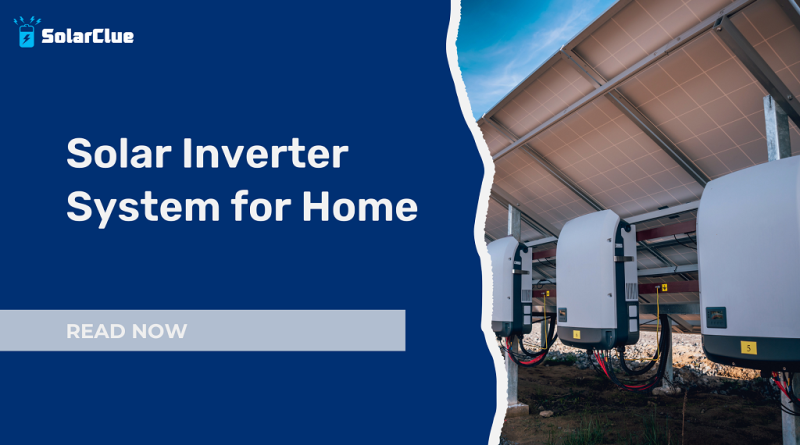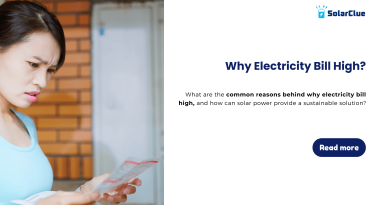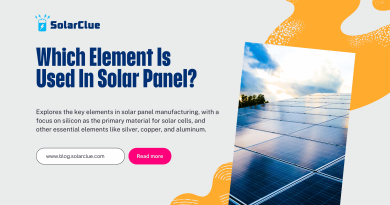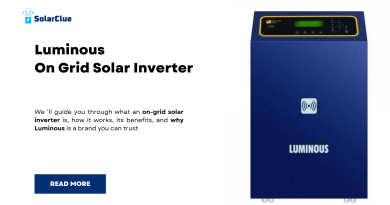Solar Inverter System for Home
Have you ever considered how much you spend on electricity every year? If you’re like most homeowners, energy costs are a significant part of your budget. Now imagine cutting those costs down, or even eliminating them altogether, while also doing your bit for the environment. This is where a solar inverter system for your home comes into play. In this guide, we’ll explore what a solar inverter system is, how it works, and why it might be the best investment you make this year. And don’t worry—we’ll keep it simple, so you don’t need to be an expert to understand.
Table of Contents
What is a Solar Inverter System?
A solar inverter system is a crucial component of any solar power setup in your home. Think of it as the brain of the solar power system. While solar panels capture sunlight and convert it into electricity, this electricity is in a form known as direct current (DC). However, the appliances in your home run on alternating current (AC). This is where the solar inverter steps in—it converts the DC electricity from your solar panels into AC electricity that your home can use.
But the role of a solar inverter doesn’t stop there. It also ensures that your solar panels are working efficiently, monitors the power generation, and even helps to send excess energy back to the grid if you produce more than you use. This means that the inverter not only powers your home but can also help you earn credits on your electricity bill through a process called net metering.
How Does a Solar Inverter System Work?
To understand how a solar inverter system works, let’s break it down into simple steps:
- Solar Panels Capture Sunlight: Solar panels installed on your roof absorb sunlight and convert it into DC electricity.
- Inverter Converts DC to AC: The solar inverter then takes this DC electricity and converts it into AC electricity, which is what powers your home’s appliances and electronics.
- Powering Your Home: The converted AC electricity flows into your home’s electrical system, where it powers your lights, refrigerator, television, and other devices.
- Managing Excess Energy: If you produce more electricity than you need, the solar inverter helps manage this excess energy. It can either be stored in batteries (if you have a hybrid inverter system with batteries) or sent back to the grid, earning you credits or reducing your electricity bill.
- Monitoring Performance: Most modern solar inverters come with monitoring capabilities, allowing you to track your system’s performance in real-time, ensuring everything is running smoothly.
Types of Solar Inverter Systems
Choosing the right solar inverter system for your home involves understanding the different types available. Here’s a quick overview of the main types:
- String Inverters:
- How It Works: A string inverter is connected to a series of solar panels (a “string”). It converts the combined DC power from all the panels into AC power.
- Pros: Cost-effective, reliable, easy to maintain.
- Cons: If one panel underperforms (due to shading, for example), it can reduce the efficiency of the entire string.
- Microinverters:
- How It Works: Microinverters are installed on each individual solar panel. They convert DC to AC right at the panel level.
- Pros: Maximizes energy production from each panel, particularly useful in situations where shading is an issue.
- Cons: More expensive upfront, more complex installation.
- Hybrid Inverters:
- How It Works: A hybrid inverter can handle both solar panel input and battery storage. It allows you to store excess energy in batteries for use when the sun isn’t shining or during power outages.
- Pros: Provides energy storage, can supply backup power, reduces reliance on the grid.
- Cons: Higher cost due to the inclusion of battery storage, which can be expensive.
- Central Inverters:
- How It Works: Similar to string inverters but used for larger systems, typically in commercial or industrial settings.
- Pros: Cost-effective for large installations, efficient for big projects.
- Cons: Not suitable for residential use, less efficient in smaller setups.
Why Should You Consider a Solar Inverter System for Your Home?
There are several compelling reasons to install a solar inverter system in your home:
- Lower Energy Bills: By generating your own electricity, you can significantly reduce or even eliminate your electricity bills. Any excess power you generate can be sold back to the grid, further offsetting costs.
- Environmental Benefits: Solar energy is a clean, renewable resource. By using a solar inverter system, you reduce your carbon footprint and contribute to a more sustainable future.
- Energy Independence: A solar inverter system with battery storage can make your home less reliant on the grid. This is particularly beneficial during power outages or in areas with unreliable electricity supply.
- Increase in Property Value: Homes equipped with solar power systems often have a higher resale value. Potential buyers are attracted to the prospect of lower energy costs and a reduced environmental impact.
- Government Incentives: Many governments offer financial incentives, such as tax credits or rebates, to encourage homeowners to switch to solar power. These incentives can significantly reduce the upfront cost of installing a solar inverter system.
Key Considerations When Choosing a Solar Inverter System
Choosing the right solar inverter system for your home involves several key considerations:
- Energy Consumption: Start by assessing your household’s average energy consumption. This information, typically found on your electricity bill, will help determine the size of the solar inverter system you need.
- Roof Space and Sunlight: The amount of roof space available and the amount of sunlight your home receives will influence the number of solar panels you can install. South-facing roofs are ideal for solar panels, but other orientations can work with the right setup.
- Budget: Your budget will play a significant role in the type of solar inverter system you choose. While microinverters and hybrid inverters offer more advanced features, they also come with a higher price tag.
- Battery Storage: If you want the option to store excess energy, you’ll need to consider a hybrid inverter system. While this adds to the overall cost, it provides greater energy independence and can be particularly useful during power outages.
- Warranty and Support: Look for solar inverters that come with a good warranty and strong customer support. A longer warranty period typically indicates a higher quality product.
- Future Expansion: Consider whether you might want to expand your solar system in the future. Some systems are more easily scalable, allowing you to add more panels or batteries as your energy needs grow.
The Cost of a Solar Inverter System in India
The cost of installing a solar inverter system in your home can vary depending on several factors, including the type of inverter, the number of solar panels, and whether you include battery storage. Here’s a rough estimate of the costs involved:
| Component | Estimated Cost (INR) |
|---|---|
| Solar Inverter (String/Micro/Hybrid) | 30,000 – 2,50,000 |
| Solar Panels | 1,50,000 – 3,50,000 |
| Battery Storage | 1,00,000 – 3,00,000 |
| Installation and Setup | 50,000 – 1,50,000 |
| Total | 3,30,000 – 10,50,000 |
While these costs might seem high, it’s important to remember that a solar inverter system is a long-term investment. The savings on your electricity bills, combined with potential earnings from selling excess power back to the grid, can make the system pay for itself over time.
Installation Process of a Solar Inverter System
The installation process for a solar inverter system involves several steps:
- Site Assessment: A professional installer will assess your home to determine the best location for the solar panels and inverter. This includes evaluating the roof’s orientation, shading, and structural integrity.
- System Design: Based on the site assessment, a custom system design will be created. This design includes the number of solar panels, the type of inverter, and the capacity of the battery storage system (if applicable).
- Permits and Approvals: Before installation, you’ll need to obtain the necessary permits and approvals from local authorities. Your installer will typically handle this process.
- Installation: The solar panels are mounted on your roof, and the inverter is installed in a convenient location, often near your home’s main electrical panel. The system is then connected to your home’s electrical system and, if applicable, to the grid.
- Inspection and Commissioning: After installation, a final inspection is conducted to ensure the system meets safety and performance standards. Once approved, the system is commissioned, and you can start generating solar power.
Conclusion
Investing in a solar inverter system for your home is a decision that comes with many benefits. Not only can it significantly reduce your energy costs, but it also helps protect the environment by reducing your reliance on fossil fuels. With the right system in place, you can enjoy greater energy independence, increase the value of your property, and even earn money by selling excess energy back to the grid. Whether you’re just starting to explore solar power or are ready to make the switch, a solar inverter system is a smart and sustainable choice for your home.
Visit SolarClue® to see the best Solar Inverter. SolarClue® actively sells solar energy products at discounts of up to 50% on its online marketplace.
FAQs
1. What size solar inverter system do I need for my home?
The size of the solar inverter system you need depends on your average energy consumption, the amount of sunlight your home receives, and your budget. A professional installer can help determine the right system size for your needs.
2. How long does it take to install a solar inverter system?
The installation process typically takes 1-3 days, depending on the size of the system and any additional features like battery storage. However, the overall process, including permits and inspections, can take several weeks.
3. Do I need a battery storage system with my solar inverter?
A battery storage system is optional but can be beneficial. It allows you to store excess energy for use during power outages or at night when the sun isn’t shining. If energy independence is a priority for you, a hybrid inverter system with battery storage might be a good choice.
4. How much maintenance does a solar inverter system require?
Solar inverter systems are generally low-maintenance. Regular cleaning of the solar panels to remove dust and debris, along with periodic checks of the inverter’s performance, is usually sufficient. Most inverters come with a warranty of 5-10 years, during which any major issues will be covered by the manufacturer.
5. Can a solar inverter system work during a power outage?
If your system includes battery storage, it can provide power during a grid outage. However, without a battery, most solar inverter systems will shut down during an outage to prevent backfeeding into the grid, which can be dangerous for repair crews.




